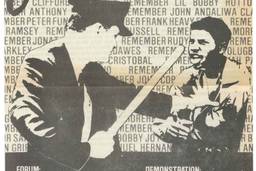A Hipstamatic Moment
Kodak is bankrupt. But we still crave the instant nostalgia that was once the company’s hallmark.
Chris Lehmann

There was a certain quiet inevitability about the news that one of the most venerable brands of industrial-era American innovation, the Eastman Kodak Company, was filing for bankruptcy. George Eastman’s photographic empire had, for much of the past century, been all but synonymous with the family snapshot: a rare fixed point of reference for the chronically placeless American memory.
But, like other custodians of cultural artifacts in the digital age, from the record industry to the bricks-and-mortar bookstore, Kodak was plying a product with vastly diminishing global demand. The company had eliminated some 47,000 jobs since 2003, shuttering 13 factories and 130 photo labs along the way. Now a good deal of the red ink it will try to expel from its balance sheets stems from pension payouts to its vast former workforce.
Kodak became a case study in flat-footed resistance to change. Kodak let time pass it by – succumbing to the complacency of a first-rank product innovator and, worse still, a “focus on past glory” that led it to be “crippled by nostalgia,” as a Reuters dispatch on the bankruptcy filing put it.
Part of the company’s insularity was a function of geography, experts now agree. With central operations concentrated in the upstate New York city of Rochester, the company became an inward-looking city-state, contemptuous of wider industry trends. “Kodak was very Rochester-centric, and never really developed a presence in centers of the world that were developing new technologies,” Harvard Business School Professor Rosabeth Kanter told Reuters. “It’s like they’re living in a museum.” Writing in the Wall Street Journal, Forbes publisher Rich Karlgaard decreed: “Kodak didn’t kill Rochester – it was the other way around.” Contrasting Kodak’s lumbering slide into bankruptcy with more nimble market turnarounds executed at smart job-shedding shops such as Intel and IBM, Karlgaard huffed that “businesses located in places where success is the norm, and innovation is built into the ecology, have a better chance of fixing themselves.”
The notion that Kodak was done in by its home community and its workforce is bunk, as most ideological cheerleading for the new economy tends to be. Karlgaard’s poster companies for flat-world mobility, IBM and Intel, are far from spontaneous outgrowths of a mystical ecology of innovation. IBM’s recent march through the low-wage American interior from its home perch in Armonk, N.Y., has been subsidized by millions in local tax breaks. Intel has attained its status as the reigning fiefdom of microprocessing largely by clamping down on government contracts – so much so that its global competitor Advanced Micro Devices filed an antitrust action to prevent brand-specific “Intel Inside” wording in federal procurement requisitions. Intel’s share of the public-sector contract market has indeed bulked to the point that the company founded a subsidiary, Intel Federal, to process all the revenue.
And strangely enough, in the great digital-imaging frontier that has passed Kodak by, consumers are increasingly prey to crippling nostalgias of their own. The hip adopters of digital photography have gone retro. One of the biggest photo apps on the iPhone is Hipstamatic – a program that uses filters and faux-aging features such as film scratches and waterspots to simulate the look of the Kodak-era snapshot: something imperfect, unrepeatable and historically contingent. Such imperfections should be central to photography, which is, after all, devoted to capturing the fleeting character of human perception in a single, irreducible instant. Indeed, Hipstamatic recently debuted an app that charged users per digital “print” on a roll of virtual film. To get more prints, you needed to buy more film – a marketing model, in other words, that perfectly mimics Kodak’s rise to prominence. (The company has since made its “film” free.) If Hipstamatic hangs in and establishes itself as the go-to digital snapshot brand, it could double as a parable of commerce for the flat-world age: an industrial-era end-user experience without benefit of a workforce, a community or a pension plan.









